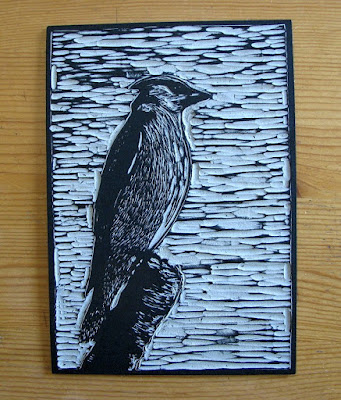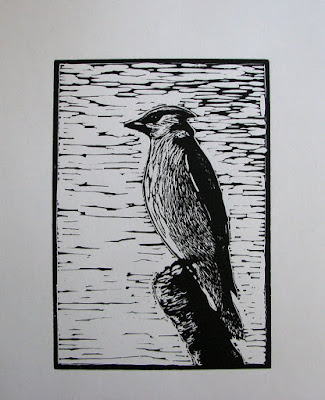photopolymer gravure/hand colouring
2009
image size 12.7 x 17.8 cm, paper 25.5 x 30.5 cm
variable edition of 50
 The Stream of Consciousness
The Stream of Consciousness
photopolymer gravure / hand colouring
2009
Image size 12.7 x 17.8 cm, paper 25.5 x 30.5 cm
Variable edition of 50
Some recent explorations with interesting results created by crossing media.
Both prints are both derived from photos I have taken. They have been interpreted as prints by exposing the positives made from the photos onto photopolymer plates and printed as gravure impressions in paper using an etching press .
The application of watercolour into both helps to expand each image from the state of a single colour impression and makes each come to life in it's own unique way.
Superior - A reflection remains fairly close to the original photo in it's colour values. I was very fortunate a couple of years back to have come across a pool of water on the shore of Lake Superior which I thought actually resembled this great lake in terms of it's shape (when one looks on a globe or in an atlas). The reflection of the fir tree and branches plus the sky and the few loose leaves floating on the surface add to the overall impact.
This same image started off as a photopolymer gravure study but in a much smaller square format last year. It was created then as a contribution I made to a miniature print exhibiton sponsered by Graphik Vaerstad Print studio in Naestved Denmark. I found the imagery rather fitting for the fresh water connection and so have scaled up and approached it with a slightly different colour palette this time around.
.
The Stream of Consciousness approaches the presentation of image from a slightly more abstract perspective. I have applied an interferance copper wash over the print (blocked out the white areas using liquid frisket) and then more washes of cerulean and indigo, serpentine green and a hint of cadmium orange on top of each other. The frisket was carefully removed with a rubber cement eraser to reveal the white of the paper. The metallic effect of the interferance wash is evident when the print is viewed in certain light and from particular angles. It reminds me of some of those beautiful glazing effects sometimes one finds on dark colour pottery.
Both of the studies are part of a series of work that explore fresh water and it's relationship to me. It is my intention that they will be on display along with 22 other studies I have produced for a trio exhibtion that focuses on this theme in a display of printed images on paper taking place at Gallery Stratford in January 2010. The show is titled Watermark.
I apologize for the copyright text emblazened across the bottom of each image. Unfortunately I have not yet been able to find a right click disable option in the blog applications so in order to protect unauthorized duplication of my images I must resort to this for the time being.



























.jpg)





















